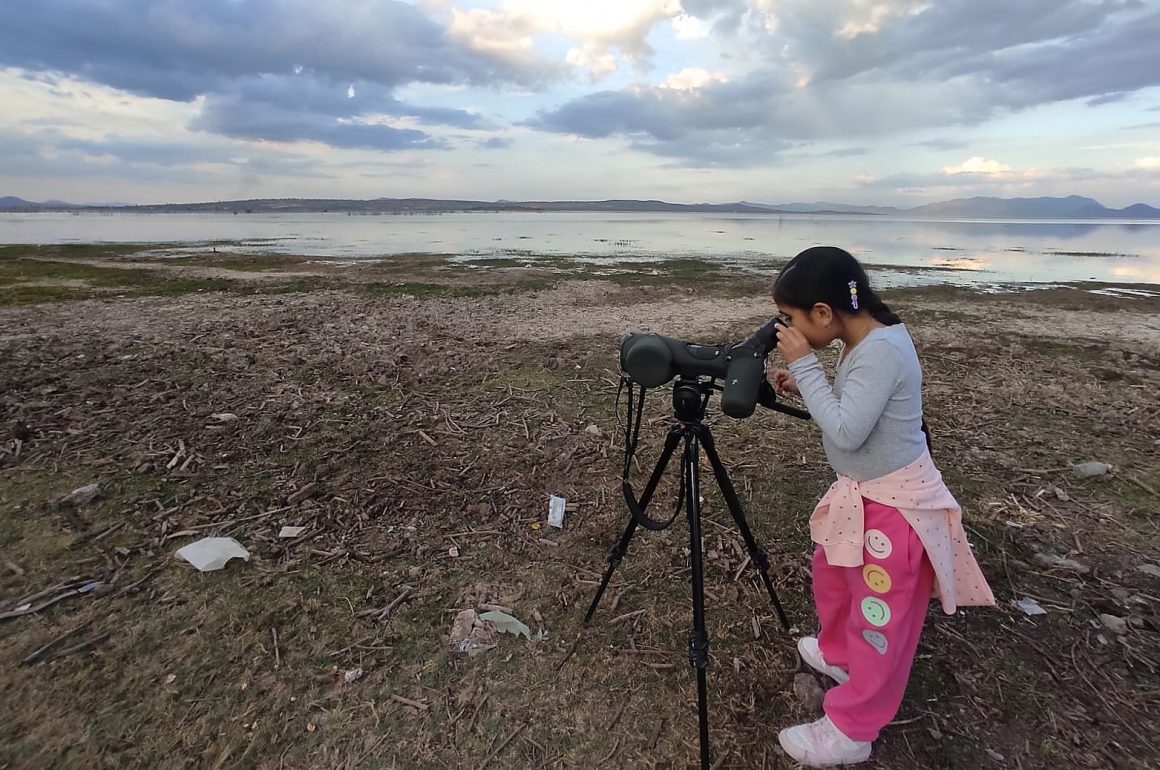
Back when I rediscovered birding, somewhere in 2012 or 2013, it was hard to find anyone here in Morelia who even knew of this pastime’s existence. Someone connected me with a person who, they said, was interested in birds. It turned out that person’s only interest was in falconry, and our encounter was not long-lasting. But he did recommend to me the Morelia-adjacent town of Laurelito, which soon became one of my favorite sites, and is now on several other birders’ regular rotation because of my recommendation. So I got something out of our encounter. I’m not so sure the same could be said for the falconer. And it took about a year for that first meeting here with a “birder”.
Fast-forward more than ten years to 2025, and you have our first-ever Lake Cuitzeo Christmas Bird Count. There were sixteen of us participating, thirteen Mexicans, one Cuban, and one American (that’s me), all residents of Mexico. Each and every one of us are passionate about birding. Half are biologists, and the other half are more than willing to spend money, and travel, to see birds. Several had travelled an hour or more to be at this Christmas Count. They were all so happy to be together that several made plans for the very next day.
We all care about birds and habitat protection, and are doing our best to help with the cause. (Writing for 10,000 Birds is part of my contribution, along with participating in citizen science, helping up-and-coming birders in the area, and donating to Conservation International and the American Bird Conservancy.)
I can’t tell you what a sea change this represents. There still aren’t that many of us — a solid twitch here in Morelia would probably not draw more than five people — but the enthusiasm and camaraderie that you can now find here are so, so much more than in previous years.
An experience we had at the CBC may suggest the next stage in this progress. After the four teams completed their separate routes, the event organizer Jonathan Vargas took us all to the little town of San Juan Benito Juárez on the lake’s southern shore. He hoped a Semipalmated Sandpiper that he had seen the day before would still be there, and it was. This was only the third sighting of this peep for our state. Semipalmated Sandpipers have a whiter breast, dark legs, and a shorter bill than our usual Western and Least Sandpipers. (Perhaps the SPSA is actually not so unusual here, and these subtle differences have caused it to slip by unnoticed.)
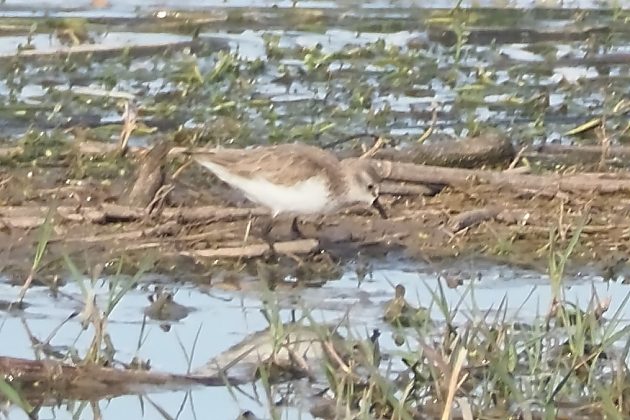
My best photo of the Semipalmated Sandpiper. Note its very short bill.
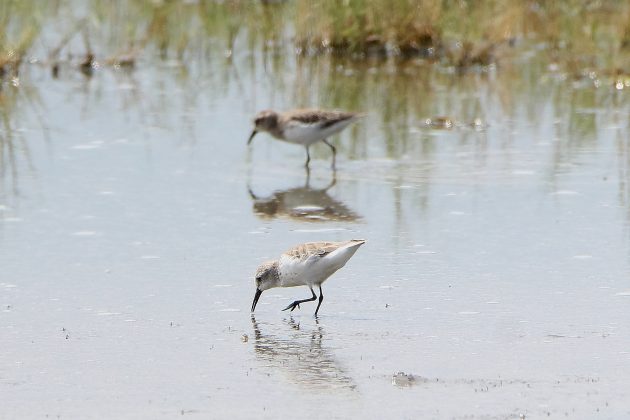
A Western Sandpiper, in the foreground, with a Least Sandpiper behind it. (Photo mine, from a previous year.)
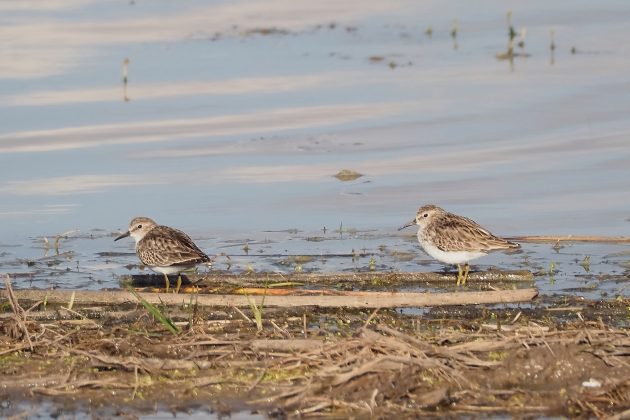
A pair of Least Sandpipers who were hanging out with the Semipalmated Sandpiper.
As we observed this peep and many other nice species, including a pair of Wilson’s Snipes, some Ruddy Ducks in unexpected reproductive plumage, and a flock of Yellow-headed Blackbirds, a large number of neighbors came out to observe our observation. I decided to take advantage of this situation, started chatting with these neighbors, and loaning them my binoculars. Soon other members of the team joined in, and the whole neighborhood was looking through a collection of binoculars and scopes.
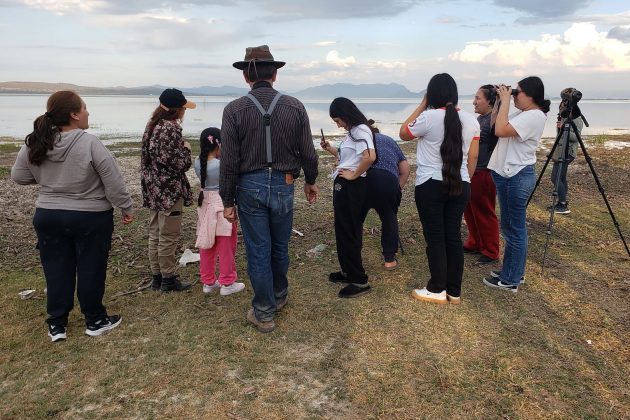
First encounter (photo by Ignacio Torres)
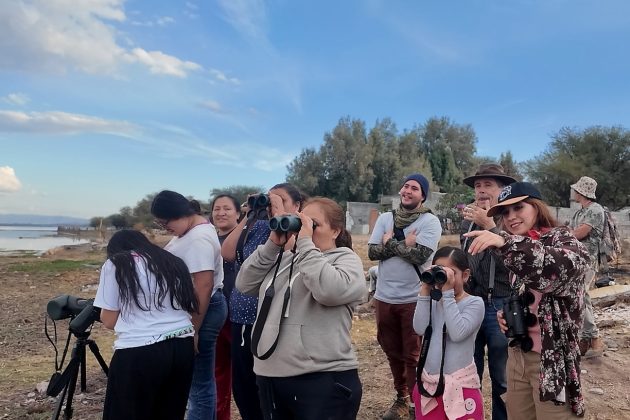
And soon everyone was doing it. (Photo by Giselle Castrejón)
They were amazed when the scopes revealed two rafts with some 10,000 Canvasbacks and 1,000 other ducks (Jonathan’s count) resting on the lake. They confessed that they never really paid any attention to the birds on their doorstep.
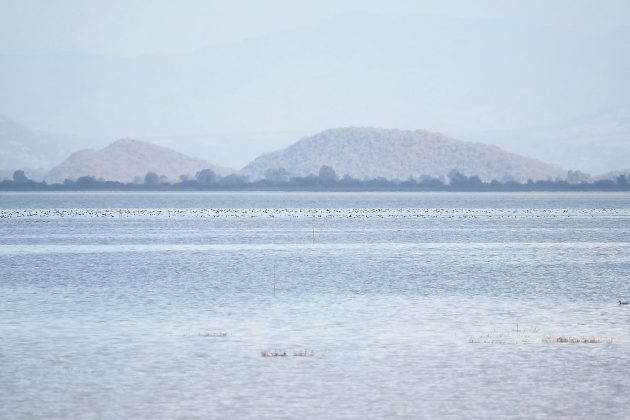
Those dots are a few of those 11,000 ducks.
“You should come and give a talk at our school about this,” one of the women said. “So the children won’t drop their trash by the lake.” And so we should.
This post isn’t really about the species I saw that day, but I will mention that several Marbled Godwits were my personal best, along with that SPSA. In theory, neither species should be found in our inland region. Another team photographed many Wilson’s Phalaropes, which should have flown further south back in October. A few Verdins and at least one Brewer’s Blackbird were also important sightings for our area. Over the whole day, the four teams saw 153 species, exactly the same number we saw two weeks earlier at the Lake Pátzcuaro CBC.
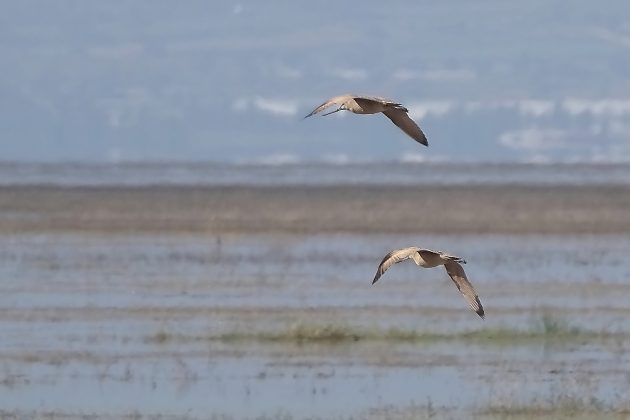
Two of those Godwits
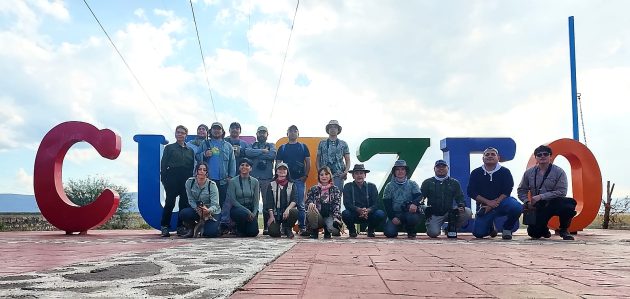
(Photo by Giselle Castrejón)
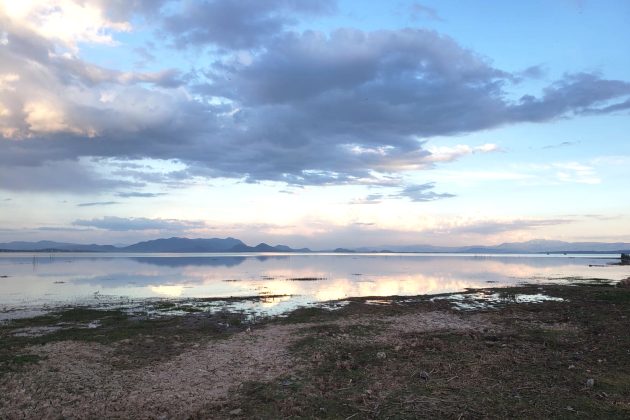
(Photo by Ignacio Torres; header photo by Jonathan Vargas)






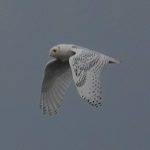
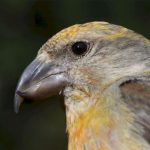
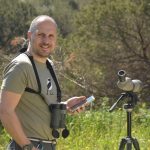
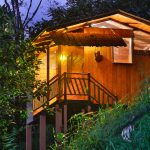
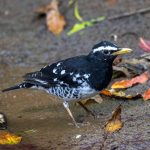
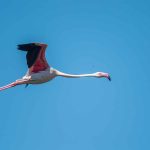
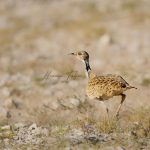
Matthew 19:14 absolutely nailed it. Make the kids understand. Absolutely love this post.
Que increíble conteo, más aún el encuentro con la gente local, y el despertar de su curiosidad. Espero que puedan realizar actividades enfocadas a esta gente local. Saludos.
Gracias por tu comentario, América. Me estoy acostumbrando a buscar más plática con la gente local, cada que se pueda.